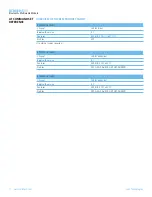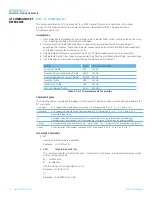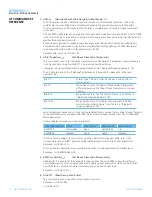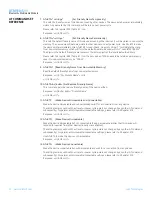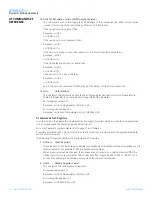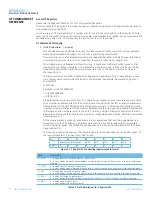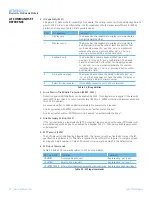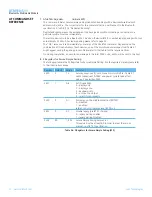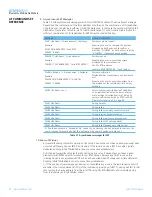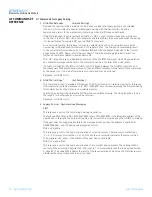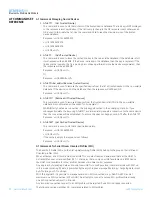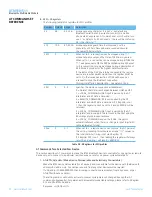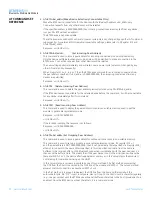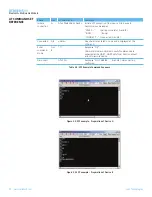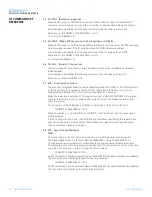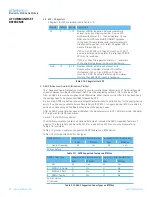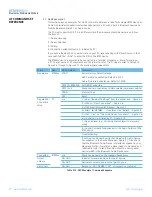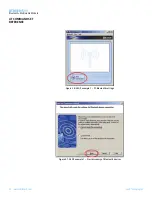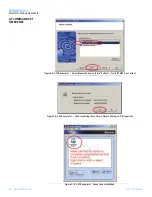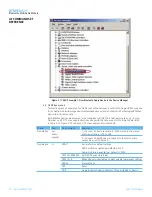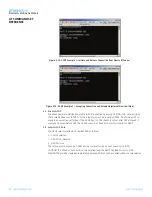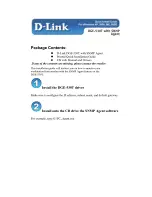
25
www.lairdtech.com
Laird Technologies
BTM510/511
Bluetooth
®
Multimedia Module
1. ATX”<string>” {Send Data in Local Command and Connected Mode}
This command is used to send data to the remote device when in local command and connected mode.
The parameter <string> is any string not more than 29 characters long whereby a non-printable
character (\hh, see below) counts three characters. This restriction results from the maximum AT
command length which is 34 (query by ATI15). The difference of 5 is caused by “ATX” (three characters)
and the enclosing quotation marks (two characters).
If the maximum string length is exceeded, ERROR 05 (syntax error) will occur.
If a non-visual character is to be sent then insert the escape sequence \hh where hh are two
hexadecimal digits. The three character sequence \hh will be converted into a single byte before
transmission to the peer.
Response: <cr,lf>OK<cr,lf>
Or
<cr,lf>ERROR 05<cr,lf>
(e.g. <string> too long)
2. ATY”<string>” {Send Data in Local Command and Connected Mode}
This command is similar to ATX in syntax and functionality, except that the string is only copied to
the output rf buffer. Only when an empty string is presented, all pending data in the output rf buffer
will be flushed out.
The parameter <string> is any string not more than 29 characters long whereby a non printable
character (\hh, see below) counts three characters. This restriction results from the maximum AT
command length which is 34 (query by ATI15). The difference of 5 is caused by “ATX” (three characters)
and the enclosing quotation marks (two characters).
If the maximum string length is exceeded, ERROR 05 (syntax error) will occur.
If a non-visual character is to be sent then insert the escape sequence \hh where hh are two
hexadecimal digits. The three character sequence \hh will be converted into a single byte before
transmission to the peer.
Response: <cr,lf>OK<cr,lf>
Or
<cr,lf>ERROR 05<cr,lf>
(e.g. <string> too long)
3. ^^^ {Enter Local Command Mode}
When in data and connected mode and when S 507 is set to 0 or 1, the host can force the device into
a command and connected mode so that AT Commands can be issued to the device. The character in
this escape sequence is specified in the S2 register, so it can be changed. In addition, the escape sequence
guard time is specified by S Register 12. By default the guard time is set to 100 milliseconds.
Leaving data mode by “^^^” has a severe penalty on data throughput, because each incoming
character needs to be checked for ‘^’ with respect to the guard time.
Alternatively, a de-assertion of the DTR/DSR line can be used as the only trigger to leave data mode
(S507=2). This gives a significant higher data throughput because data is passed directly between UART
and RF without character checking. Please refer to Section 6, page 26 for more information.
In modems this escape sequence is usually “+++”. “^^^” is specified to avoid confusion when the
module is providing access to a modem.
Response: <cr,lf>OK<cr,lf>
4. !!! {Enter Remote Command Mode}
When in data and connected mode, the host can force the remote device into a command and
connected mode so that AT Commands can be issued to the device remotely. The escape sequence
guard time is specified by S Register 12 and is the same as per the ^^^ escape sequence. By default
the guard time is set to 100 milliseconds. The remote device issues ATO as normal to return to data
mode (Refer to 5). For this command to be effective S Register 536 must be set to 1.
Response: <cr,lf>OK<cr,lf>
AT COMMAND SET
REFERENCE

